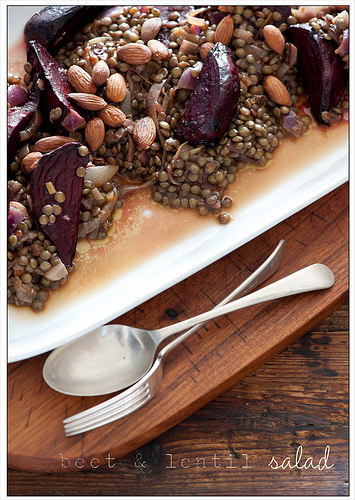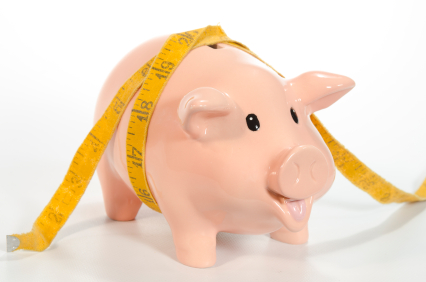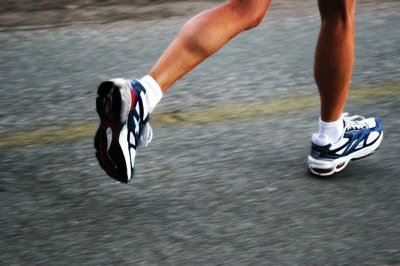This guest post is by Jules Clancy of Stonesoup.
As Summer draws to a close and the evening start to get a little chilly, there’s one thing that saves me from getting depressed about the long, cold Winter ahead.
It’s the food.
And the anticipation of getting a decent appetite back.
While I love salads and ice cream as much as the next girl, possibly more even, I find I just don’t get as hungry when it’s warm out and the focus is on keeping cool.
But as soon as the temperature dips and the days start to draw just that little bit shorter, I find my hunger returning. Thankfully, it also brings along the desire to spend more time in the kitchen than the few seconds it takes to toss a Summer salad.
After months of neglect, it’s time to get reunited with my oven and my love for baking. It’s time to start thinking about roasts and slow cooked dishes. Meat that just falls of the bone when you think about touching it with a spoon.
It’s time to start thinking about soups and mushrooms and roasting nuts. Among other things…
Which produce comes into season in the Fall?
After having the whole summer to grow and ripen, it’s not surprising that fall is the season of the harvest. A season of abundance.
- Vegetables: For me fall is all about pumpkins and mushrooms. But it also sees the beginning of the root vegetables that really come into their own in winter. Beets and carrots are lovely at this time of year as are parsnips.
- Fruit: Grapes and their divine end product, wine are big in the fall. Other fall fruit includes apples, pears, figs, pomegranate and quince.
- Meat: For some reason I associate pork with the fall. Probably because it goes so well with apples that are in season. Although it could just be that I’m looking for an excuse to eat some crackling.
7 ideas to get you excited fall produce again
1. Visit a farmers market
With cold storage and the global food chain, shopping in your local supermarket can be so consistent from month to month. Boring when you think about it. Its no wonder we become detached from the seasonal nature of food production.
Fortunately, there’s a super-easy way to get back in touch. No, you don’t need to find a big plot of land and get your green thumb happening, although that might be fun. All it takes is a visit to your local farmers market. Chatting to people who really live and eat by the season, it’s hard not to be infected by their charm.
2. Go foraging for mushrooms, or not…
I have dreams of one day being adopted by an old Italian man who knows how to find the best wild mushrooms and avoid the spectre of death. Unfortunately this is still waiting to be realised.
So in the meantime, I make do with meaty portabello mushrooms from the market. Just roast them with some thyme, garlic and a generous few knobs of butter. Just the thing for a warm salad or a hearty veggie sandwich.
3. Roast some nuts
It always amazes me how a little bit of heat can bring alive the wonderful toasty flavours of nuts. Leave chestnuts for the winter and stock up on hazelnuts and almonds instead. Just the thing to add crunch and some warming, nutty flavours
4. Seduce someone with the worlds sexiest salad
It’s hard to beat a fresh fig when it comes to food for seduction. Except possibly a salad made to be shared with figs, buffalo mozzarella, proscuitto and a handful of parsley for some greenness.
5. Make a pot of soup
Even though one of the best soups I ever ate was in a back alley on a swealtering day in Bangkok, I still think of soup as being about cooler weather. I’m happy to skip them all tougether in favour of salads during the summer. But when fall comes knocking, I’m happy to let him in if there’s a big pot of veggies and stock simmering away on the stove.
6. Bake a cake
Now that it’s cool enough to crank up your oven, get busy with a spot of baking. A super moist carrot cake like the recipe below if just the thing. Or better yet, try theselittle chocolate cakes for a hit of intense chocolatey goodness.
7. Plan a wine holiday or weekend
All the activity with harvesting grapes from the vineyard and fermenting them into the nectar of the Gods makes fall a vibrant time to visit any wine region. The chance to sample ripe wine grapes fresh from the vine is something all wine lovers should experience at some stage. Prepare to be blown away by the depth of flavour which makes table grapes taste like simple sugar water.
[5 ingredients | 5 minutes] A warm lentil salad for fall
Serves two.If you’d prefer to keep it nut free, a little goats cheese or feta would make a great substitution for the almonds.
I prefer this salad slightly warm, but it’s also great at room temperature.It’s one of those hearty salads that can be made in advance and will sit around happily until you’re ready to eat.
Feel free to either use canned beets or roast your own. Scrubbing fresh beets and chopping into quarters or smaller chunks. Place in a roasting pan, drizzle with olive oil and a little balsamic vinegar, cover with foil and roast for 45 minutes to an hour, or until tender.
For the balsamic onions, just soften a couple of large sliced onions in a generous glug of olive oil and then finish with a few tablespoons of good quality balsamic vinegar.
1 tablespoon sherry vinegar
250g (9oz) cooked or canned lentils, drained
10 pieces roast or canned beets
3-4 tablespoons balsamic onions
optional small handful roasted almonds
- Whisk vinegar with 2 tablespoons extra virgin olive oil in a large bowl. Season.
- Toss in lentils, onions if using and divide between two plates.
- Top with beets and almonds.
[5 ingredients | simple baking] Super-moist carrot cake
Serves six to eight.
Almond meal can be expensive, so if you’d prefer to keep costs down substitute the almond meal with some self raising flour or all flour. The texture will be lighter and more traditionally cakey, but it will still be lovely. You probably won’t need to bake it as long either.
This is like one of those wonderfully squidgy brownie recipes where it’s not meant to be cooked all the way through. If you’re a little nervous about eggs not being 100% cooked, by all means do so, but the texture will loose some of it’s pudding-like moistness.
250g (8 1/2 oz) brown sugar
1/2 cup vegetable or peanut oil
3 eggs
250g (8 1/2 oz) almond meal
250g (8 1/2 oz) carrots, coarsely grated
- Preheat your oven with a baking sheet on the middle shelf to 180C (350F).
- Line a 20cm (8in) spring form cake tin with baking paper. Grease the base and side with a little oil.
- In a large bowl, mix together the sugar and oil.
- Add eggs, one at a time mixing to combine. Stir in almond meal and carrots.
- Pour cake mixture into the prepared tin and level off with a spoon.
- Bake for 1 hour, or until the top is golden and feels firm to the touch. Cool in the tin.
What are you favorite Fall foods? Share your recipe ideas in the comments!
Jules Clancy loves food and wine so much she has science degrees in both. She is the author of 5 Ingredients | 10 Minutes and blogs about delicious meals that can be made in minutes over at Stonesoup.













Recent Comments